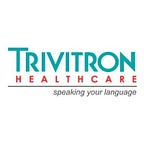The Essential Guide to Multipara Patient Monitors: Features, Benefits, and Selection
In today’s dynamic healthcare landscape, effective patient monitoring is paramount for ensuring optimal clinical outcomes. Multipara patient monitors, designed to meticulously track a multitude of vital signs, play a pivotal role in this domain. This comprehensive guide delves into the core functionalities, advantages, and crucial selection criteria associated with these versatile medical devices, empowering healthcare professionals with the knowledge to make informed decisions.
Core Features of Multipara Patient Monitors
Multipara patient monitors serve as the watchful eyes and ears at the bedside, meticulously capturing and displaying a comprehensive range of physiological parameters. Here’s a glimpse into some of the fundamental features they offer:
Electrocardiogram (ECG): This essential feature measures electrical activity within the heart, providing insights into heart rhythm, rate, and potential abnormalities.
Pulse Oximetry (SpO2): Non-invasively monitors blood oxygen saturation levels, a critical indicator of respiratory function.
Non-invasive Blood Pressure (NIBP): Enables automated measurement of blood pressure, streamlining workflow and reducing manual interventions.
Respiration Rate (RR): Tracks respiratory rate, providing valuable clues about ventilation efficacy.
Body Temperature: Measures core body temperature, aiding in the detection and management of potential infections.
Beyond these fundamental parameters, advanced multipara monitors may offer additional functionalities, such as:
Capnography (EtCO2): Monitors end-tidal carbon dioxide levels, a valuable tool for assessing ventilation adequacy during critical care situations.
Invasive Blood Pressure Monitoring: Provides highly accurate blood pressure readings through arterial cannulation, crucial for hemodynamically unstable patients.
Arrhythmia Detection: Sophisticated algorithms can automatically detect and alert healthcare providers concerning cardiac arrhythmias.
Central Venous Oxygen Saturation (ScVO2): Measures oxygen saturation levels in the central venous blood, offering insights into tissue oxygen delivery.
Unveiling the Advantages of Multipara Patient Monitors
The incorporation of multipara patient monitors into clinical settings offers a multitude of benefits for both healthcare providers and patients:
Enhanced Patient Safety: Continuous monitoring of vital signs allows for early detection of physiological deterioration, enabling timely intervention and potentially life-saving measures.
Improved Clinical Decision-Making: Real-time access to comprehensive patient data empowers clinicians to make informed decisions regarding treatment plans and adjustments.
Streamlined Workflow: Automated vital sign capture eliminates the need for manual measurements, freeing up valuable time for nurses and doctors to focus on direct patient care.
Reduced Risk of Errors: Automated data collection minimizes the potential for human error associated with manual measurements, promoting patient safety and data accuracy.
Increased Patient Comfort: Non-invasive monitoring techniques employed by multipara monitors minimize patient discomfort, enhancing the overall care experience.
Selecting the Right Multipara Patient Monitor
With an array of multipara patient monitors available, selecting the most suitable option necessitates careful consideration of several factors:
Patient Population: The specific needs of the patient population being monitored heavily influence the choice. For instance, a neonatal intensive care unit (NICU) would require a monitor with specialized features for neonates, while a general medical-surgical ward might prioritize basic yet reliable monitoring capabilities.
Required Features: Align the monitor’s functionalities with the intended clinical applications. For instance, a critical care unit might require advanced features like invasive blood pressure monitoring and capnography, whereas a post-surgical recovery area might prioritize basic vitals monitoring.
Connectivity and Data Management: Consider the monitor’s compatibility with existing hospital information systems to facilitate seamless data integration and centralized patient recordkeeping.
Ease of Use: An intuitive user interface is crucial for efficient operation, especially during time-sensitive situations.
Alarm Management: Effective alarm systems with customizable parameters are essential to prevent alarm fatigue and ensure timely response to critical events.
Durability and Service Support: The monitor’s build quality and readily available service support are crucial for long-term reliability and minimizing downtime.
Cost Considerations
While the initial cost of a multipara patient monitor is a significant factor, a holistic approach that considers long-term value is essential. Factors such as durability, maintenance requirements, warranty coverage, and upgradeability all contribute to the overall cost of ownership. Reliable manufacturers like Trivitron Healthcare offer a diverse range of multipara patient monitors catering to various needs and budgets, ensuring you can find an optimal solution.
Conclusion
Multipara patient monitors have become indispensable tools in modern healthcare settings, empowering clinicians with the ability to meticulously track a broad spectrum of vital signs. Their comprehensive feature sets, coupled with the numerous advantages they offer, translate to enhanced patient safety, improved clinical decision-making, and streamlined workflows. By carefully considering patient needs, feature requirements, budget (including the multipara monitor price), and the factors discussed in this guide, healthcare facilities can select the most suitable monitor to elevate patient care and optimize clinical outcomes.
